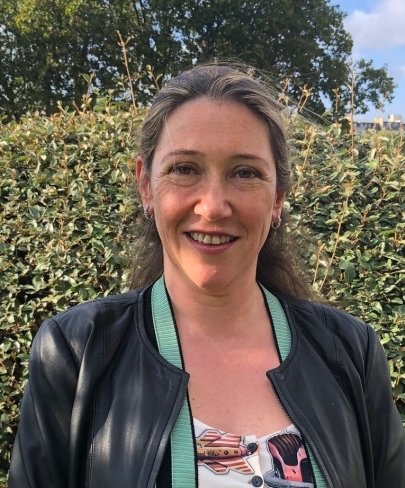Marie-Anne Rameix-Welti Sheds Light on Respiratory Syncytial Virus Factories
Respiratory syncytial virus (RSV) is one of the deadliest respiratory viruses, especially in young children. However, deciphering the mechanisms that allow its entry into the host cell has not led to any effective treatments so far. What if the solution lay downstream of these early stages of the viral cycle? This is the avenue that Marie-Anne Rameix-Welti has decided to explore, with major steps already made thanks to Atip-Avenir funding in 2018.

Marie-Anne Rameix-Welti* does not do things by halves: motivated to enter the world of research, she combined her medical studies with a university education at the prestigious École Normale Supérieure. Between 2000 and 2008, she completed her medical residency, the second year of her Masters, her doctoral thesis, and gave birth to three children! « It was during those years that I developed the desire to understand the mechanisms that regulate the multiplication of viruses, starting with influenza A. I first became interested in respiratory syncytial virus (RSV) during my post-doc and went on to explore this further once I was recruited as a teacher-researcher. » Her goal: to understand the late mechanisms that allow the virus to multiply by forming new virions in an infected cell.
RSV is one of the major causes of respiratory infections in infants and young children and is linked to severe, life-threatening forms and the development of bronchiolitis. « The existing vaccines and antivirals that have been developed to fight this virus act on the early stages of infection, targeting the interaction between the virus and host cells. But this approach hasn’t been successful so far. Understanding the mechanisms that unfold further down the line could lead to the identification of new therapeutic targets, » she hopes.
Viral factories made fluorescent
Her approach is based on the use of genetically-modified viruses: by fusing a viral protein to a fluorescent protein, the former can then be visualized. Here, the viral protein being targeted is the one that usually associates with the genetic material of the virus. The production and fate of the newly-formed viral genomes can therefore be studied in infected living cells using microscopy. « We’ve already shown that RNA and viral proteins gather within types of bubbles in the cell cytoplasm. Like drops of oil in water, these viral factories have no membranes, which is very surprising because the cell compartments usually all have one. »
Having reinforced her team thanks to funding from Atip-Avenir, the research continues: « We want to determine the precise nature of these structures. We also want to describe more precisely how the virions exit the cell. To do this, we’re looking to identify the networks used by the viral genetic material that is ready to be expelled. We’ve already observed that RSV doesn’t use the cell machinery that other viruses use to cut the cell membrane. »
A researcher committed to fighting COVID-19
The COVID-19 epidemic has turned the agenda of Rameix-Welti’s team upside down. In collaboration with Ambroise-Paré Hospital, to which her laboratory is attached, and with a team from France’s National Research Institute for Agriculture, Food and Environment (INRAE) with its history of expertise in coronaviruses, she has launched a project dedicated to this new viral disease. It all began with an observation: « Coronaviruses have been around for a long time and we’ve coexisted with the oldest of them for several decades with no difficulty. So why is there a difference in clinical response to the most recent ones, particularly SARS-CoV‑2, which is responsible for COVID-19? » The idea is to study potential explanations for these disparities in the serology of individuals, with or without the infection. Which antibodies are shared by or specific to the different viruses? Are there any cross-recognitions? The answers to these questions could provide prognostic elements for identifying those most at risk of developing symptoms or severe forms of the disease.
Note :
*unit 1173 Inserm/Université de Versailles Saint-Quentin-en-Yvelines, Infection and inflammation, Montigny-Le-Bretonneux, France
